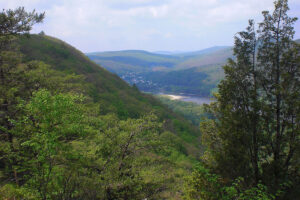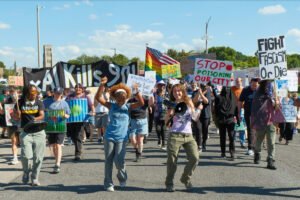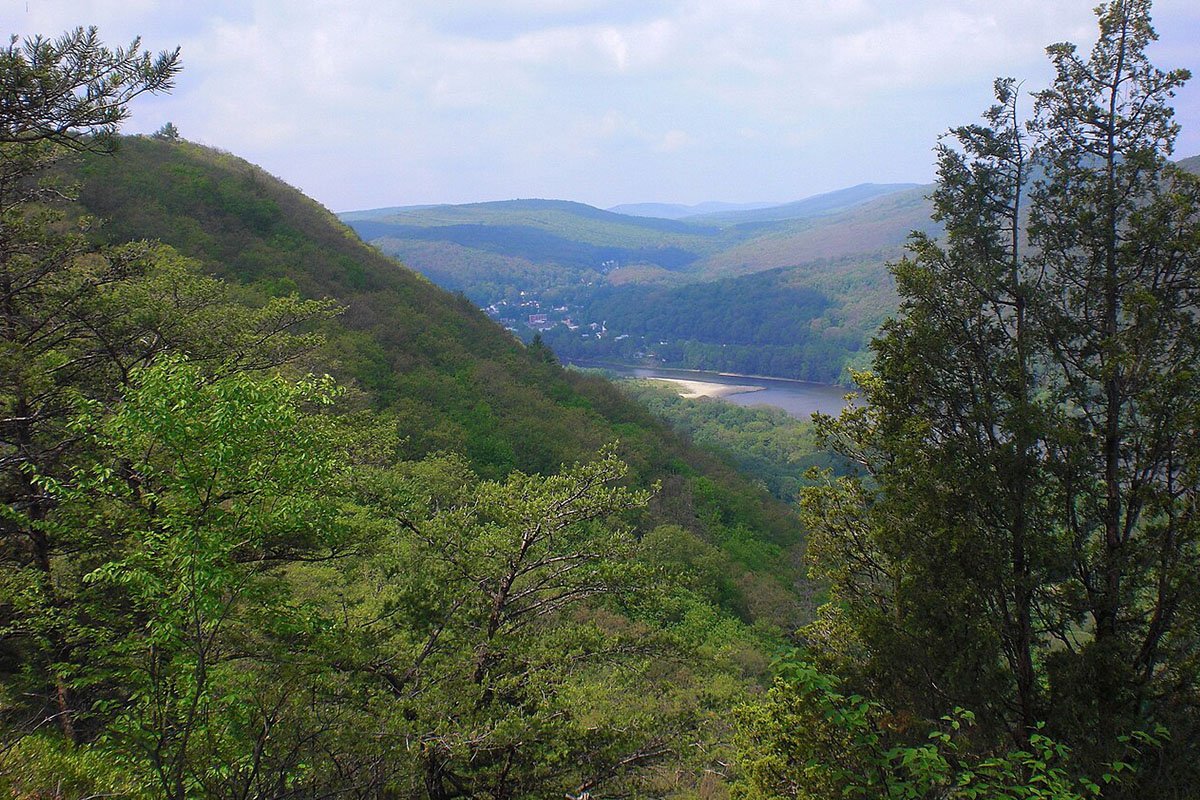
In emergency management and disaster response, a common refrain is “all disasters start and end locally.” In the first couple of hours or even days after a disaster hits, neighbors rescue neighbors, often before first responders arrive on the scene. Author Rebecca Solnit has written eloquently about this: “When all the ordinary divides and patterns are shattered, people step up—not all, but the great preponderance—to become their brothers’ keepers. And that purposefulness and connectedness bring joy even amidst death, chaos, fear, and loss.”
Then there is the “ending locally” part. Five or 10 years after a disaster, national nonprofits are usually long gone, even as people and families continue to suffer. Those who remain, nearly always, are local community organizations.
Traditionally, when disaster recovery activities begin, external governmental and non-governmental organizations (NGOs) come to the affected area—think the Federal Emergency Management Agency (FEMA), the American Red Cross, World Central Kitchen, or Convoy of Hope—along with national staff, volunteers, supplies, and financial assistance. The work these kinds of organizations do is critical in addressing immediate needs, but it is not always enough. Their assistance is time-limited, resource-dependent, and sometimes has strict requirements, creating hoops for recipients to jump through. People who are undocumented or for whom English is not their first language do not always feel comfortable approaching such mainstream organizations.
In the small village where I grew up, supporting neighbors was a natural component of rural life. In the last few years, and especially since COVID-19, there has been a significant surge in mutual aid organizations popping up in the aftermath of disasters. These organizations provide individualized and needs-based support to those affected. Grounded in the principle of caring for one’s neighbors, the organizations often deliberately lack the formal structures of a nonprofit.
Recent disasters—including COVID-19—brought the work of these groups to my attention, and I began to explore them in more detail. With each new disaster that I encounter as part of my work at the Center for Disaster Philanthropy (CDP), I see more and more communities supported through the work of emergent or existing mutual aid networks. This was particularly true with Hurricane Ida, the Kentucky tornadoes, and the Texas winter storm of 2021.
Defining Mutual Aid
At its most basic, mutual aid is the free or bartered exchange of goods between people. Its practitioners recognize that everyone has assets and needs. But mutual aid is more than that. It is based on the principles of “self-organization, egalitarianism, direct action, and social transformation.”
Professor Dean Spade says, “Mutual aid describes the work we do in social movements to directly support each other’s survival needs, based on a shared understanding that the crises we are facing are caused by the system that we’re living under, and are worsened by those systems. Mutual aid focuses on helping people get what they need right now, as we work to get to the root causes of these problems.” In his book, Mutual Aid: Building Solidarity During this Crisis (And the Next), Spade simplifies his definition of mutual aid to “collective coordination to meet each other’s needs.”
Mutual aid differs from charity in that the latter is based on solving problems for people, while mutual aid stems from a desire to solve problems with people. With charity, governments and the wealthy give to those they deem deserving, whereas mutual aid is grounded in the recognition that everyone’s needs should be met, especially when facing a crisis.
Mutual Aid Theory
The term “mutual aid” is an old one. One early advocate and theorist was Pëtr Kropotkin, a Russian aristocrat turned revolutionary who wrote in the late 19th and early 20th centuries. Contrary to the social Darwinism of his age, which posited a “survival of the fittest” philosophy, Kropotkin traced mutual aid practices in the animal kingdom, arguing that survival instead depended on solidarity.
In his book about Kroptkin, Lee Alan Dugatkin describes the biologist’s 50,000-mile, five-year foray through Siberia. Dugatkin wrote,
Though still in its early gestation period when Kropotkin began his journey through Siberia, evolutionary theory of the day advanced that the natural world was a brutal place: competition was the driving force.…What he found was that competition was virtually nonexistent. Instead, in every nook and cranny of the animal world, he encountered mutual aid. Individuals huddled for warmth, fed one another, and guarded their groups from danger, all seeming to be cogs in a larger cooperative society. “In all the scenes of animal lives which passed before my eyes,” Kropotkin wrote, “I saw mutual aid and mutual support carried on to an extent which made me suspect in it a feature of the greatest importance for the maintenance of life, the preservation of each species and its further evolution.”
Kroptkin also saw mutual support practiced in Siberian peasant villages, where residents worked together to build a cooperative community. Mutual aid, he concluded, was a key component of the survival of humans and other animals.
Mutual Aid’s Historical Roots
Mutual aid has taken many forms in countless countries and cultures. In Chiapas, the Mayan-based Zapatista uprising of 1994 ushered in a period of nearly 30 years of self-determination and self-government rooted in mutual aid practice. As Global Social Theory explains, “the Zapatistas have focused their efforts on living a peaceful life of decolonial, anti-capitalist, collective resistance, concentrated upon recuperating land, mutual aid, and exercising autonomy. The Zapatistas achieve this by centering their Indigenous traditions and the practice of horizontal governance, equitable gender relations, anti-systemic health care, grassroots education, and agroecological food sovereignty.”
The modern-day Zapatistas may be of relatively recent origin, but their mutual aid and organizing practices have deep roots both in Mayan culture and Mexican history. In the late 1800s, as more Mexican workers moved to Texas to work low-wage jobs in farming, mining, ranching, and the railroads, they brought with them the concept of mutualistas. To quote NPR affiliate, KWBU, “The organizations worked to provide low-income families with resources they otherwise might not have access to.…these groups provided services their community members were being denied, things like education and healthcare. Mutualistas also negotiated for better working conditions and created insurance funds to take care of members. That made a huge difference in quality-of-life.”
In the US, formalized mutual aid arises from traditions that date back centuries. It is a process steeped in anti-capitalism, anti-racism, unions, democracy, and anti-authoritarianism. Mutual aid has a particularly strong history among African Americans; the National Humanities Center lists numerous Black-run mutual benefit organizations and societies in the late 1700s and early 1800s, explaining that, “Mutual assistance and self-help have been cornerstones of African American community for generations.…The earliest mutual assistance societies among free Blacks provided a form of health and life insurance for their members—care of the sick, burials for the dead, and support for widows and orphans.” Black mutual aid societies also sought to promote education and job training, especially vital for those who had recently escaped enslavement.
Sign up for our free newsletters
Subscribe to NPQ's newsletters to have our top stories delivered directly to your inbox.
By signing up, you agree to our privacy policy and terms of use, and to receive messages from NPQ and our partners.
Mutual aid was also widespread in US immigrant communities originating from Europe and the Americas. A 1985 article by historians Gary Mormino and the late George Pozzetta, titled “The Cradle of Mutual Aid,” highlights that in Tampa, Florida, in particular the city’s Ybor district, “Beginning in the 1890s with a few hundred immigrant males, the Cuban, Spanish, and Italian societies crested in power and influence in the immediate pre-and post-World War II era, boasting two modern hospitals, five pharmacies, five medical laboratories, seven clubhouses (including West Tampa), and a membership totaling over 20,000 persons.”
In my adopted home of New Orleans, African Americans founded social aid and pleasure clubs in the mid-19th century, in part to provide financial burial support for both enslaved and free Black residents. The Black Panthers’ breakfast clubs, started in 1968, are another example of people coming together to provide a needed resource and at the same time organize the community.
Mutual Aid: The New Normal of Disaster Response
Despite this lengthy history, mutual aid declined in many US communities in the 20th century, in part due to the rise of the New Deal welfare state. Frankly, the modern nonprofit sector played a role too. But recent events—notably the COVID-19 pandemic and the rising movement against anti-Black racism spurred by the murder of George Floyd, Breonna Taylor, and countless others—have spurred a revival of mutual aid networks and organizations. In its Mutual Aid Legal Toolkit, the Sustainable Economies Law Center observes that, “Mutual aid networks exploded onto the scene with pandemic shelter-in-place orders. By some counts, there are well over 1,000 new mutual aid networks across the country, and likely thousands more that are operating informally in hyperlocal efforts.”
Mutual aid takes many forms. During the early days of the pandemic, food distribution was a common focus. During the uprisings following Floyd’s murder, bail funds were gathered to help get activists out of jail quickly.
Increasingly, the first response to a natural disaster is also a mutual aid response. This was the case, for instance, in Houston during the Texas winter storm of February 2021. Just days after the storm paralyzed Texas’ power grid and caused massive water-pipe breaks, Mutual Aid Houston, a BIPOC-led network, closed their GoFundMe campaign after its $250,000 goal was exceeded by almost $69,000. They wrote, “Our small team of organizers at Mutual Aid Houston are overwhelmed by the outpouring of support we have seen over the last few days. In full transparency, we are currently working on getting immediate, direct aid out to Houstonians as soon as possible.…If you would like to contribute, we ask that you first consider the wonderful organizations we have listed below before us.” They then provided links to other Texas-based direct action and grassroots organizations. This action reflects a common mutual aid tenet, namely, that there are always enough resources to go around; the challenge is how resources are distributed. By supporting organizations other than themselves, Mutual Aid Houston was able to move more money throughout the community.
During Hurricane Ida here in New Orleans, I saw many examples of mutual aid, from community power stations and food distribution to the delivery of fans, generators, coolers, ice, and other needed supplies. For instance, Imagine Water Works (IWW)—which is queer, trans, and Indigenous-led—has run a Facebook mutual aid group for a couple of years, providing resources that include delivering water bottles to person living in a park and providing accommodation for a mom and child fleeing intimate partner violence. But it is during disasters that they, and the community they have built, truly shine. During Ida, for example, IWW was granted access to a neighborhood school. People in need could come and take what they need rather than being limited by arbitrary supply guidelines set by a government or nonprofit.
In Justice, Equity and Emergency Management, two IWW founders write, “Grassroots mutual aid trusts those most impacted by disasters to know what they need and provides the ability to self-advocate, rather than prescribing a one-size-fits-all solution. For example, those who evacuated to New Orleans during Hurricane Laura were able to use the Imagine Mutual Aid group to request items that were not considered or were outside the scope of traditional emergency response.”
A key benefit of mutual aid is that it restores a powerful sense of community agency. This means disaster recovery becomes more than the simple provision of goods and services. It becomes an opportunity to restore community capacity by bringing together the expertise of disaster survivors with those newly impacted.
Why the Climate Crisis Requires a Mutual Aid Response
As growing climatic instability resulting from increasing amounts of atmospheric carbon dioxide continues to cause unseasonal and above-normal disasters, there is a need for local organizations to be ready to respond at a moment’s notice. Mutual aid organizations are often more flexible and nimbler than mainstream organizations. They can quickly roll out actions and support because they are embedded in the local community. They do not have to raise funds before they activate. Instead, they trust that their networks’ members will step up quickly in response.
This was evident when a massive tornado outbreak occurred across several states in December 2021. While traditional aid nonprofits and the government responded, mutual aid groups and grassroots organizations were often first on the scene.
Spencer Jenkins, the founder and Executive Director of Queer Kentucky, told Atmos Magazine, “There’s power in putting money directly into people’s hands.…Government aid isn’t always an option for the most marginalized. Undocumented folks, for instance, don’t qualify for most aid. Trans or gender non-conforming people, on the other hand, may have to confront body dysmorphia or discrimination when filling out applications for government aid…especially when disclosing the name they were given at birth.”
After most disasters, media list only the names of large and well-known national nonprofits. In contrast, after the 2021 tornado outbreak, local groups like Kentuckians for the Commonwealth, Queer Kentucky, Rise and Shine Bowling Green, and Hood to the Holler received media spotlight. This is a sign that nationally we are starting to recognize that our disaster recovery system is changing.
Watching the growth—and especially the popularization—of mutual aid groups over the past few years has given me hope. Sadly, the growing climate emergency means that disasters are becoming more intense and frequent. More government resources are needed, but even if budgets are increased, new resources alone won’t be enough. Rather, there must be a radical transformation in our system of disaster assistance. Government, philanthropy, and nonprofits must see their roles differently; they must become, not simply “service organizations” that provide goods and services to individuals, but partner organizations that collaborate with local groups so as to respond more nimbly and effectively.
In other words, in this emerging model of disaster recovery, nonprofits, philanthropy, and government have a key new role: help local communities build and sustain effective networks of mutual aid.











